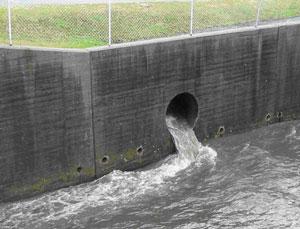By Lee R. Epstein via Bay Journal
Most of us in the Bay community are celebrating this moment in time for the Chesapeake and its rivers and streams.
In 2010, the EPA established pollution limits—known legally in the Clean Water Act as a Total Maximum Daily Load or TMDL—for waters draining into the Chesapeake (after decades of monitoring, modeling and receiving thousands of comments). Concurrently, the Bay states and the District of Columbia began to refine their plans to meet those pollution targets with programs and funding in place by 2025.
Together, the pollution limits and the jurisdictions’ plans to meet them constitute a Chesapeake Clean Water Blueprint. And, it is working. By some measures, we are halfway to meeting our pollution-reduction goals. The progress we are witnessing demonstrates what can happen when governments, businesses, and individuals work together.
And, the progress begets more progress.
Every pollution sector but one is marching toward success. The outlier is stormwater—that unfiltered stuff running off parking lots, rooftops, sidewalks and roads directly into waterways. It can contain motor oil, gasoline, fertilizers, pesticides, heavy metals and other pollutants we really do not want in our water.
While stormwater is not the biggest source of pollution by any stretch of the imagination, it does need to be addressed.
In fact, the Clean Water Act provides the authority to regulate stormwater under the National Pollution Discharge Elimination System, which requires permits for stormwater discharges in cities and counties of a certain size.
For the most part, the states have been left to address stormwater pollution with very little guidance. With varying degrees of success, the states address stormwater from new development. But stormwater from existing development remains unaddressed.
Until now. Because of the Chesapeake Bay Foundation’s June 2010 legally binding settlement with the EPA (Fowler v. EPA), the EPA has to draft and release federal stormwater rules. A national performance standard will be set — likely to be based on controlling the runoff up to a certain-size storm — to manage this growing source of pollution to waters everywhere.
We think this rule cannot come too soon. And, we will look for it to include at least four specific areas of concern.
First, the rule should level the playing field for all of the states.
Second, the rule should treat new development and redevelopment differently. It is easier and less costly to prevent stormwater pollution in new development, where there is room for proper design, than it is to treat stormwater in tight urban spaces when redevelopment occurs, although redevelopment should be encouraged.
Third, existing urban areas should not be given a pass. There should be a provision in the rule for retrofitting in urban areas. Some of these strategies can be “green,” and are actually less expensive than traditional “gray” infrastructure, as is being demonstrated right now in Lancaster, PA, Philadelphia and elsewhere.
And, fourth, the rule should expand the areas needing municipal permits to include certain existing impervious areas — for example, large suburban shopping malls — as well as those areas which are just now urbanizing, to prevent runoff pollution before it becomes a problem.
A draft of the EPA’s national stormwater rule is expected this spring. We should look for it to ensure it does what it should do to reduce pollution and contribute to much healthier waterways. Clean water is the legacy we should be leaving to our children and grandchildren.




Julia HBJH says
Well, that is all good news. BUT the trouble is, these laws have to be enforced by local officials, such as Roads and Parks department officials. And they are pretty much NOT, at least in our neighborhood (100″ +/- from the river/Bay) over the last ten years. And not for want of us trying. Great idea, though, Maryland. Thanks to our wonderful Talbot Spy for the forum!